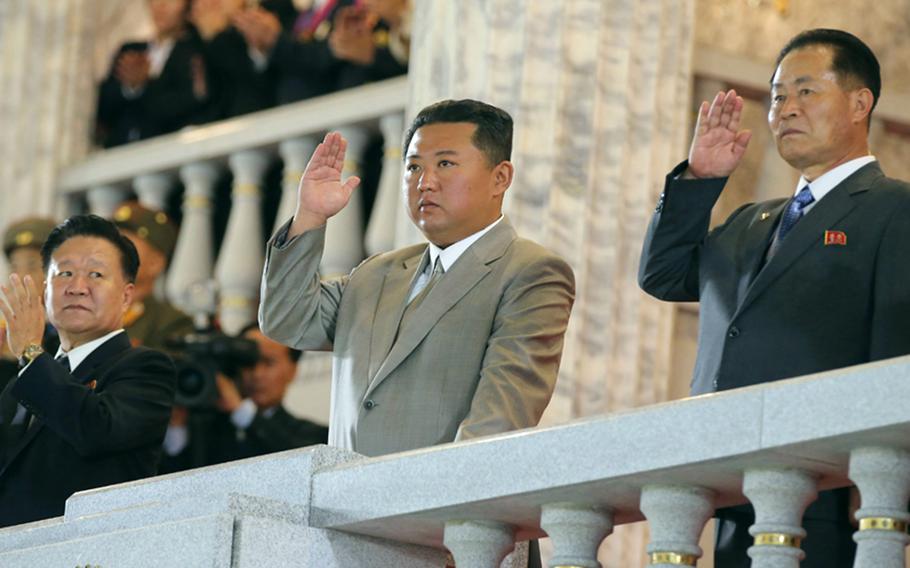
This image from the state-run Rodong Sinmun newspaper shows North Korean leader Kim Jong Un, center, attending a military parade in Pyongyang, early Thursday, Sept. 9, 2021. (Rodong Sinmun)
WASHINGTON (Tribune News Service) — The U.S. continues to observe activity at North Korean nuclear sites that is “inconsistent with full denuclearization,” the Defense Intelligence Agency said in a report issued Friday.
The conclusion, based on observations at the Yongbyon nuclear site and elsewhere, echoes assessments delivered to former President Donald Trump by U.S. intelligence agencies, despite Trump’s efforts to engage in direct summit diplomacy with North Korean leader Kim Jong Un.
Although North Korea hasn’t conducted nuclear tests since 2017, it has “reversibly” dismantled parts of its weapons of mass destruction infrastructure, the Pentagon’s intelligence arm found.
In recent years, “Kim has placed a priority on the development and demonstration of weapons that provide North Korea the means to strike distant adversaries — including the United States — with nuclear weapons,” according to the DIA. It said these goals reflect a strategy focused on “deterrence and coercion” that will see North Korea develop and enhance capabilities ranging from land-based and submarine-launched ballistic missiles to nuclear weapons, unmanned aerial vehicles and cyberspace capabilities.
The report noted that the closed nature of the North Korean regime makes data collection difficult. It assessed that North Korea’s economy had probably contracted in 2020 as a result of COVID-19-related trade disruptions.
About 20% to 30% of North Korea’s economy is allocated to the military, the report said, adding that Kim has prioritized modernization of both nuclear and conventional forces. North Korea now possesses electronic warfare and counterspace capabilities such as GPS and satellite jammers. In addition, its ballistic missiles could theoretically disrupt orbiting satellites, the report said.
These high-tech capabilities are juxtaposed against long-standing weaknesses, especially in terms of the logistics required for “sustained combat operations.” Although underground roads and military facilities would help the regime survive in a conflict, North Korea may have sufficient supplies for only two to three months of “defensive combat operations,” the defense agency said.
The report described Kim as the “linchpin” of North Korea’s military, adding that his public statements suggest that he has “sole release authority” for the country’s nuclear weapons.
___
©2021 Bloomberg L.P.
Visit bloomberg.com
Distributed by Tribune Content Agency, LLC.